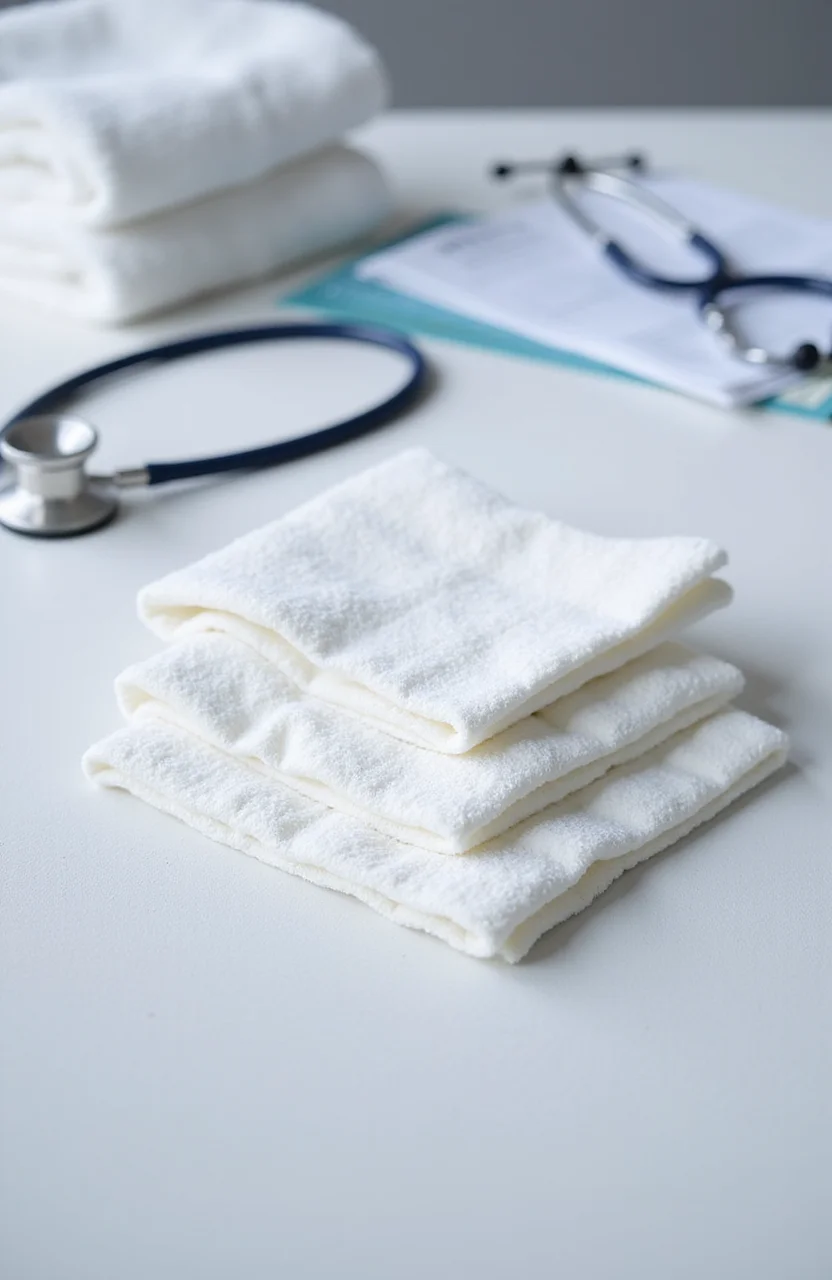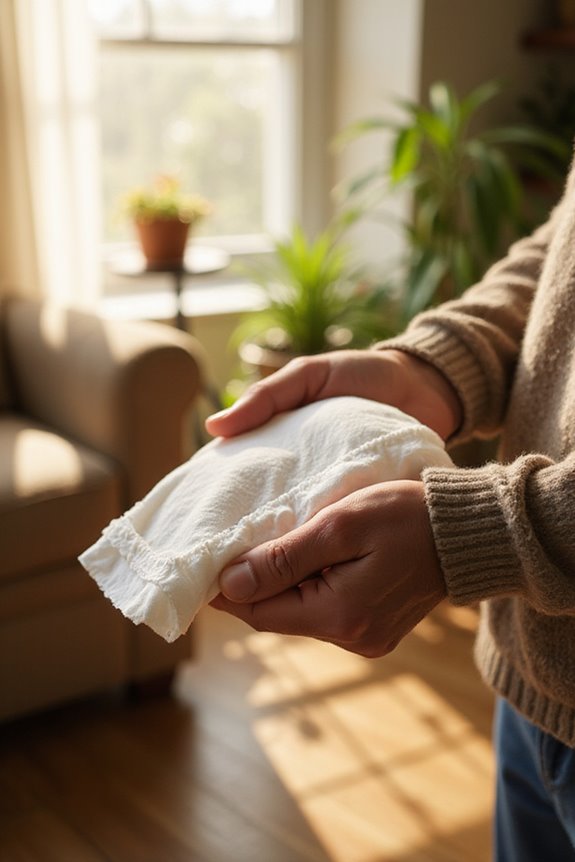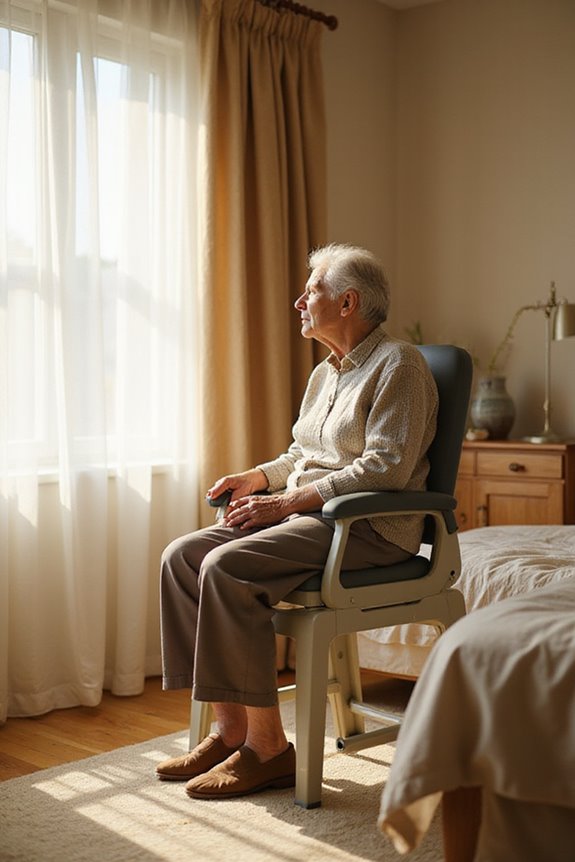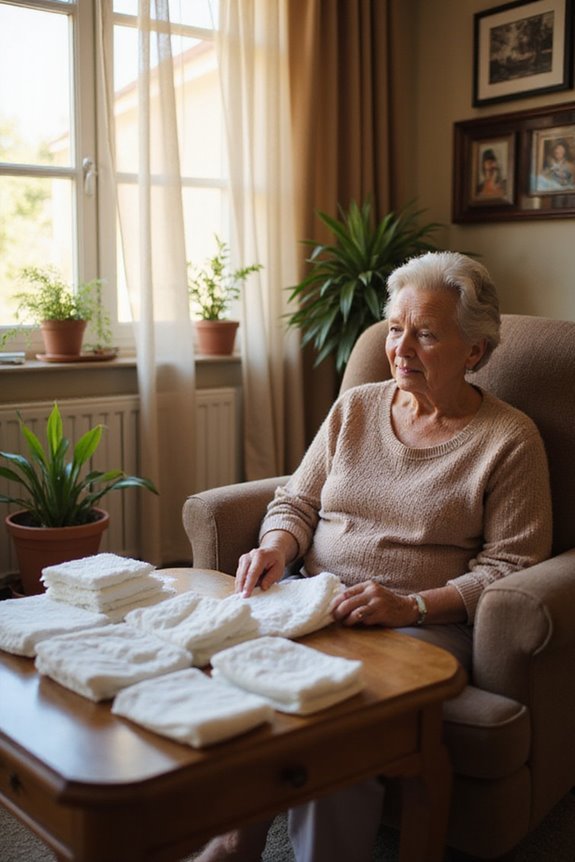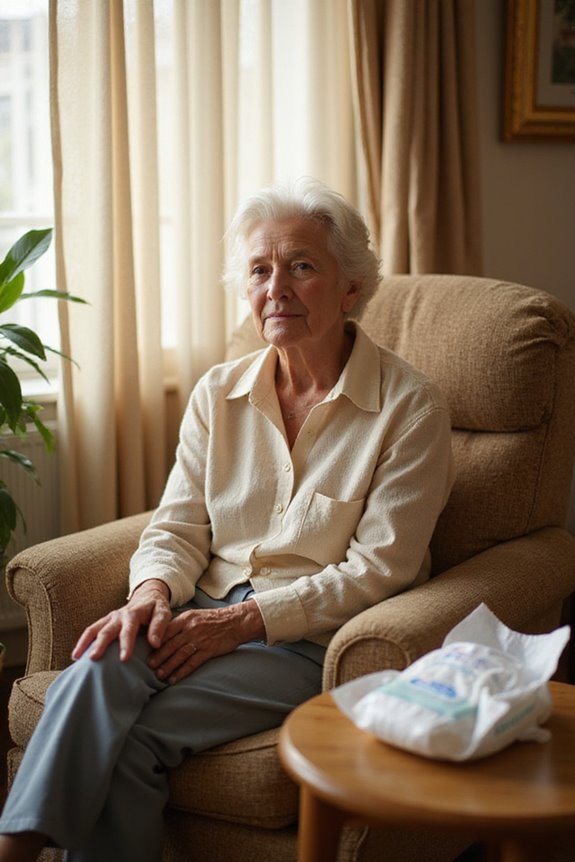Waterproof bed pads are essential for maintaining cleanliness and hygiene. They typically consist of an absorbent core using Super Absorbent Polymer, a leakproof polyethylene backing, and a quilted top layer of cotton or polyester. Proper absorbency levels are vital; light levels suit minor leaks, while ultra absorbency is for heavy incontinence. Choices between reusable and disposable options exist, with reusable pads being more environmentally friendly. Understanding features and care instructions can enhance comfort and skin health. Additional insights are available.
Key Takeaways
- Waterproof bed pads feature an absorbent core and leakproof backing, ensuring cleanliness and hygiene during use.
- They come in various absorbency levels, suitable for different needs ranging from light dribbles to heavy incontinence.
- Reusable pads are eco-friendly and cost-effective over time, while disposables offer convenience but generate waste.
- Proper care for reusable pads includes rinsing immediately after use and washing with mild detergent to maintain effectiveness.
- Benefits include promoting skin health, reducing laundry frequency, and minimizing the risk of skin breakdown or infections.
What Are Waterproof Bed Pads Made Of?
Waterproof bed pads are constructed from a variety of materials designed to guarantee both functionality and comfort.
Material Types:
- Absorbent Core: Super Absorbent Polymer (SAP) is utilized for high liquid absorption. Tissue paper and fluff pulp enhance moisture distribution and capacity.
- Backing: Polyethylene (PE) film forms a leakproof barrier, preventing liquid seepage and ensuring durability.
- Top Layer: Quilted absorbent cloth, often made from cotton or polyester blends, offers softness and moisture management.
Construction Techniques:
- Composite blends, such as 80% cotton and 20% polyester, provide durability.
- Polyurethane layers are used for a breathable waterproof surface.
- Organic materials are emerging, offering allergy prevention and chemical-free properties, thereby catering to environmentally conscious consumers. Additionally, many options now include high absorbency features to effectively manage moisture levels.
How Do I Choose the Right Absorbency Level?
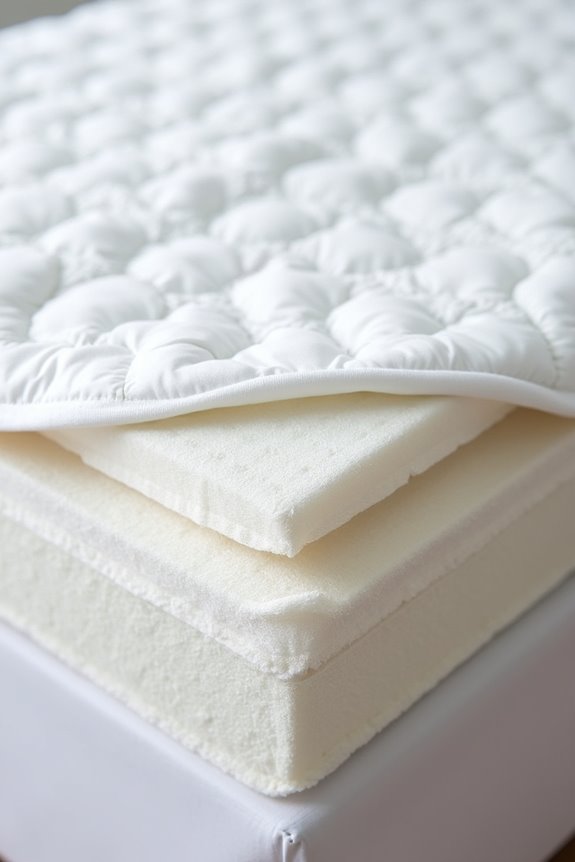
Choosing the right absorbency level for bed pads requires careful consideration of specific needs and circumstances. Various absorbency options are available, including light, moderate, heavy, and ultra absorbency, each suited for different fluid leakage conditions.
Choosing Factors:
- Leak Frequency: Light dribbles may only require light absorbency, while heavy incontinence necessitates ultra absorbency.
- Duration of Use: Daytime use may call for moderate absorbency, whereas overnight use typically requires higher levels.
- Skin Sensitivity: Moisture-wicking properties are essential for preventing irritation, influencing absorbency needs.
- Pad Size: Larger pads provide greater fluid capacity, enhancing protection.
Evaluating these factors guarantees peak comfort, skin health, and effectiveness in managing incontinence or fluid leakage. Additionally, selecting the right absorbency ensures that odor control features are effective, contributing to a more pleasant experience.
What Are the Differences Between Reusable and Disposable Bed Pads?
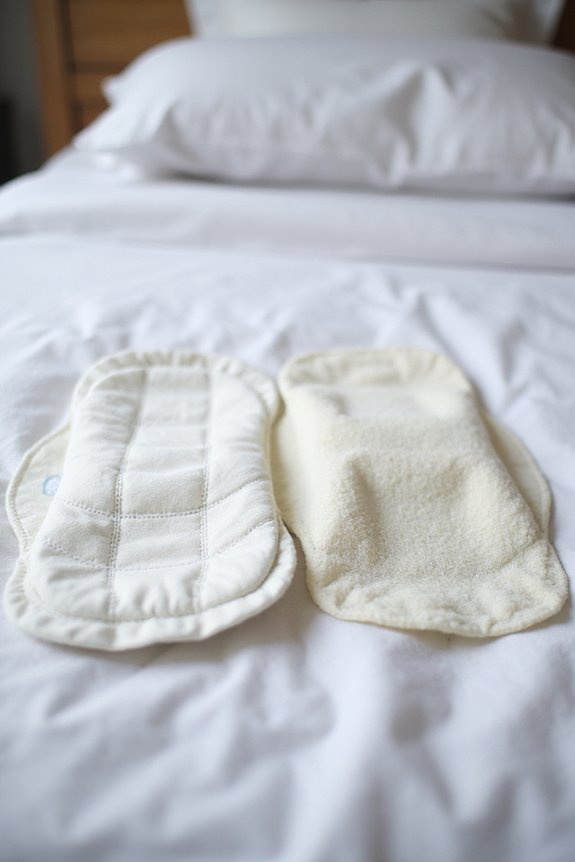
What distinguishes reusable bed pads from disposable ones?
Material Composition
– Reusable pads utilize soft fabrics like rayon and natural fibers, while disposables consist of absorbent polymers with a plastic backing.
Durability and Usage
– Reusable pads are designed for multiple washes, offering long-term use, whereas disposables are single-use, requiring frequent replacement.
Cost Comparison
– The initial cost of reusable pads is higher, but they become more economical over time, reducing ongoing expenses associated with disposables.
Environmental Impact
– Reusable pads considerably lower landfill waste, presenting an eco-friendly choice. In contrast, disposable pads contribute to continuous waste generation and environmental concerns.
How Do I Properly Care for Reusable Bed Pads?
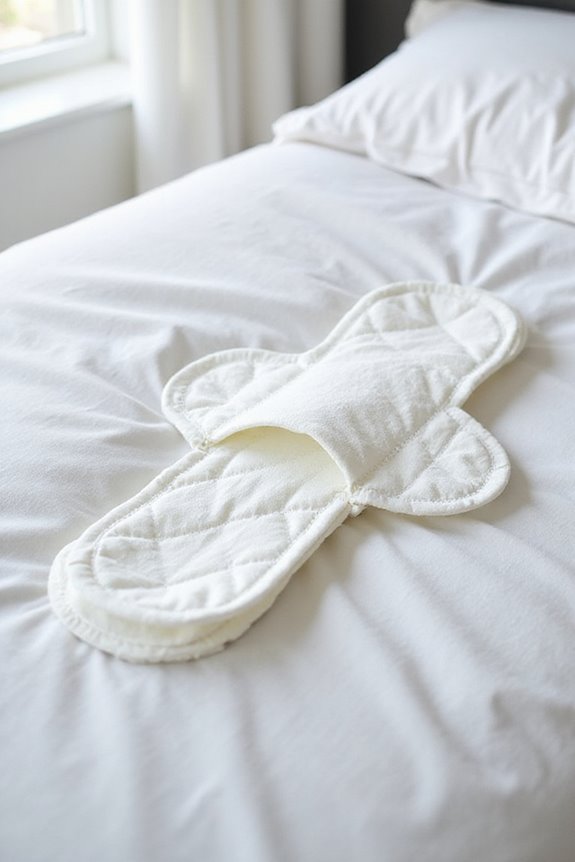
Proper care for reusable bed pads is essential to guarantee their longevity and effectiveness. To assure ideal pad maintenance, users should follow these guidelines:
- Rinse pads under cold water immediately after use to prevent staining.
- Wash pads in cold water with mild, non-chlorinated, fragrance-free detergent.
- Perform an extra rinse cycle to eliminate detergent residues.
- Air dry or tumble dry on low heat, ensuring pads are completely dry before storage.
Washing frequency should be consistent, with regular cleaning to prevent odors and bacterial buildup. High-quality reusable pads can endure approximately 200 to 300 wash cycles if maintained properly. Inspect pads regularly for wear to uphold their protective qualities and enhance their durability.
Can Waterproof Bed Pads Help With Incontinence?
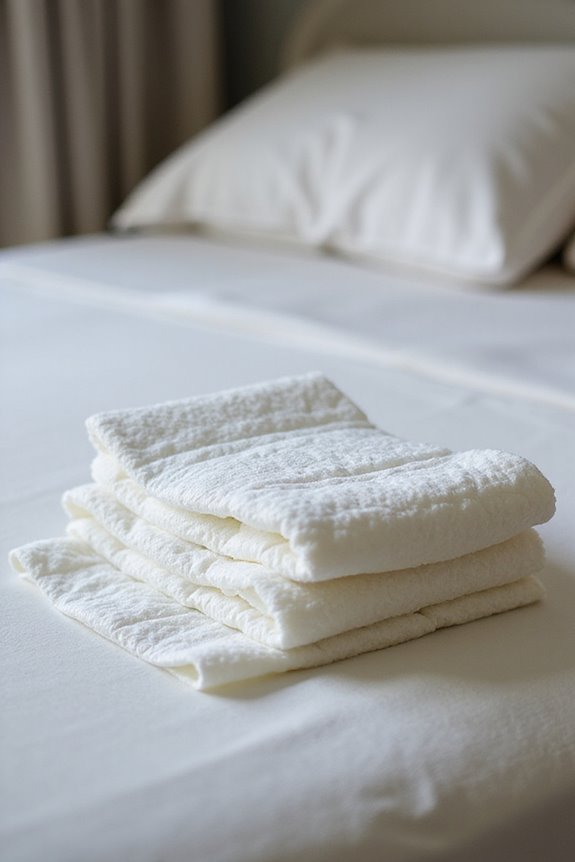
Waterproof bed pads are designed to provide significant assistance in managing incontinence, offering protection for both users and their living spaces. These essential incontinence products feature a multi-layer design that absorbs and contains liquids, while the waterproof backing prevents moisture from reaching mattresses and furniture.
Bed Pad Benefits:
- Protects against urine and feces, maintaining cleanliness.
- Helps maintain a dry surface, promoting skin health and comfort.
- Reduces the frequency of laundering due to leaks.
- Minimizes the risk of skin breakdown and infections.
- Can be used alongside other incontinence products for enhanced protection.
What Sizes Are Available for Bed Pads?
A variety of sizes is available for bed pads, accommodating different mattress dimensions and user needs. The following are common bed pad sizes:
- Crib pads: 27 x 52 inches
- Twin pads: 39 x 75 inches
- Full pads: 54 x 75 inches
- Queen pads: 60 x 80 inches
- King pads: 76 x 80 inches
Additionally, sizing variations include:
- Small underpads: 24 x 36 inches
- Regular underpads: 33 x 35 inches
- Large underpads: 34 x 52 inches
- Extra-large underpads: 34 x 70 inches
For specialized needs, options for hospital beds range up to 42 x 80 inches, while oversized pads, such as Wyoming King and Alaskan King, cater to larger mattresses.
Are There Hypoallergenic Options for Sensitive Skin?
Individuals with sensitive skin often seek bedding solutions that minimize irritation and allergic reactions. Hypoallergenic bed pads provide several benefits for those with skin sensitivity, including:
- Reduced Irritation: Designed to minimize skin discomfort and allergic responses.
- Moisture Management: Often equipped with moisture-wicking properties to prevent sweat-related irritation.
- Allergen Protection: Effective against dust mites, pet dander, and other common allergens.
- Cooler Sleeping Surface: Many materials maintain a cooler temperature, further reducing irritation.
Common hypoallergenic options include TENCEL™ mattress protectors, bamboo products, and medical-grade incontinence pads. These alternatives are often washable and designed for durability, ensuring longevity while maintaining their hypoallergenic benefits. Regular maintenance enhances their effectiveness, making them ideal for individuals seeking comfort and protection. Additionally, many of these products feature moisture-wicking properties that enhance comfort and dryness for sensitive skin.
How Do Waterproof Bed Pads Enhance Comfort During Sleep?
Comfort during sleep is markedly enhanced by the use of waterproof bed pads, which integrate multiple layers of technology to promote a restful environment.
- Soft Layer Benefits: The uppermost layer is designed for softness, providing a gentle surface against the skin, which contributes to overall comfort.
- Moisture Absorption Techniques: Advanced moisture-wicking layers quickly absorb and trap moisture, preventing discomfort from wet bedding. This effective moisture management guarantees a dry sleep environment.
- Hygiene and Cleanliness: By preventing moisture buildup, these pads inhibit mold growth and minimize allergens, contributing to a healthier sleep space.
- Durability: Designed for longevity, waterproof bed pads resist wear, allowing for repeated use while maintaining their absorbent qualities.
Together, these features create a conducive atmosphere for sleep, enhancing the user’s overall experience.
Frequently Asked Questions
Can Waterproof Bed Pads Be Used for Pets?
Waterproof bed pads can indeed be used for pets, offering both pet comfort and hygiene benefits. These pads keep living areas clean, ensuring pets remain dry and comfortable while protecting flooring from accidents and spills.
Do Waterproof Bed Pads Make Noise When Moving?
During a restless night, Sarah noticed her waterproof bed pad produced distracting noises with each movement. Prioritizing noise reduction, she discovered that softer materials greatly improved movement comfort, ensuring a quieter and more peaceful sleep experience.
How Long Do Reusable Bed Pads Last?
Reusable bed pads typically last between 1 to 5 years, influenced by durability factors such as material quality and care instructions. Proper laundering and maintenance can greatly extend their lifespan, offering both practicality and sustainability.
Are Waterproof Bed Pads Machine Washable?
Like a trusted companion, waterproof bed pads are indeed machine washable. Following laundry tips and maintenance advice guarantees their longevity, preserving comfort and hygiene while providing reassurance for those who seek reliability and care in their lives.
Can I Use a Bed Pad on a Couch?
Using a bed pad on a couch offers effective couch protection and enhances furniture safety. It safeguards against spills and accidents, ensuring a welcoming environment that supports comfort and longevity for cherished living spaces.

